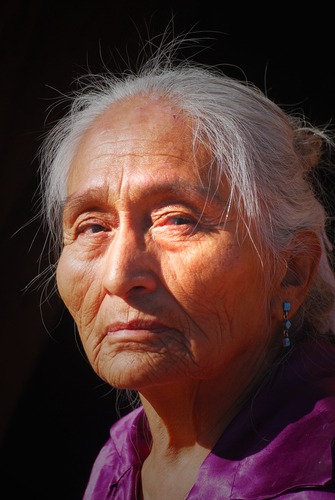Modern Issues
 Perhaps the largest issue facing Navajo today is economic underdevelopment. Much of the Navajo Reservation is remote, with many areas being accessible only by four wheel drive or horse or (particularly in winter) by helicopter. This lack of accessibility has made it difficult for many Navajo to find employment and educational opportunities.
Perhaps the largest issue facing Navajo today is economic underdevelopment. Much of the Navajo Reservation is remote, with many areas being accessible only by four wheel drive or horse or (particularly in winter) by helicopter. This lack of accessibility has made it difficult for many Navajo to find employment and educational opportunities.
Your textbook (p. 344) reports that in 1990, more than 57% of Navajo families living on the reservation lived below the poverty level. More than 25 years later this number has only slightly improved; today, some 43% live under the poverty level.
Today, the economic mainstay of most Navajo on the reservation is sheep and cattle raising and crafts (particularly silver-working and rug weaving). Despite its remoteness and lack of access to wage-sector jobs, the Navajo reservation does have abundant natural resources (particularly uranium and coal) that are sought after by mining companies.
However, because of the environmental damage and health hazards associated with mining, development of mining activities is a source of great controversy among the Navajo. Radioactive waste from uranium mining, conducted from the 1940s to the 1980s, has left behind a damaging legacy.
Coal mining—while providing much needed jobs and income-- has also been problematic; in 2005 one of the largest strip mines on the reservation was shut down for emission violations.
Although Navajo was slow (compared to many other Native American tribes) to authorize gaming on their reservation, since 2004 the tribe has opened four casinos. These casinos have created more than 1,500 jobs, of which 90 percent are held by Navajo. Additionally, in recent years the tribe has begun to explore the feasibility of operating alternative energy enterprises such as solar power plants and wind farms.
Click on next page to continue.
